Here’s a summary of which woodwind instruments ae easier to learn
- Recorder
- Flute
- Piccolo
- Clarinet
- Saxophone
- Basson
- Oboe
Woodwind instruments can provide both excitement and fun for beginning students learning to play a musical instrument. The selections in this family of instruments range from huge to little and from the highest to the lowest in sound (from saxophone to contrabassoon).
To begin playing the woodwinds, you don’t need to spend a lot of money upfront. If you’re undecided about which woodwind instrument to get, you should take into account their size, price, and breathing techniques.
For most students aged 10-12 (when most kids begin playing in the band), the flute, clarinet, or alto saxophone is a good starting point for woodwind players. However, some consideration may be necessary for some students.
What factors can influence learning musical instruments
Depending on your age, stature, and dexterity, certain beginner woodwind instruments are easier to pick up than others. To further understand how these aspects affect the learning process for individual wind instruments, let’s examine them.
-
Hand size
The size of your hands may make it difficult to reach and cover the keys on some wind instruments, depending on the instrument.
Someone with small hands can have difficulty covering the tone holes on a clarinet, and not entirely sealing the holes can prevent notes from communicating and/or cause some unpleasant noises to arise! Younger players will have an easier time covering the tone holes on the flute and saxophone because of their covered design.
-
Your Age
Because of the technical demands of woodwind instruments, pupils should have their front adult teeth by the time they take their first lessons around the ages of 10 to 12. The top teeth of the clarinet and saxophone rest on the mouthpiece, making this an especially significant consideration.
-
Dexterity
Some woodwind instruments may be more difficult to learn than others, according to the student’s dexterity. The oboe and bassoon are intermediate instruments, whereas the flute, clarinet, and saxophone are all standard introductory woodwind instruments.
So, What Is The Easiest WoodWind Instrument To Learn?
Learn to play one of these simple woodwind instruments. If you’re just starting, these woodwind instruments are a good place to start.
-
RECORDER
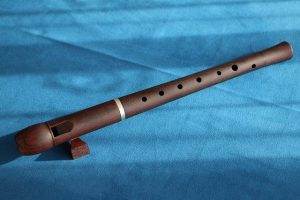
The recorder is one of the easiest woodwind instruments to learn, and it’s also the most affordable. For pupils under the age of 10, this is an excellent choice because of its small size, lightweight, and ease of blowing.
The recorder’s fingering system is similar to that of the clarinet. Many young wind players begin their training on the recorder before moving on to the clarinet or another instrument.
The most common sizes of recorders are soprano, alto, tenor, and bass. However, recorders come in a wide range of sizes. On the recorder, the majority of beginners start on soprano.
Plastic or wood can be used to make recorders. Because they are affordable and long-lasting, plastic recorders are ideal for young musicians just starting. However, wooden recorders are more expensive and difficult to repair than plastic ones.
Beginner-level recorders range in price from $2 to $30, depending on the brand and type. Even while it may be tempting to go with the cheaper option, the sound quality and intonation of the more costly versions are significantly better.
When it comes to saving money in the long term, buying a high-quality beginner instrument can pay off. As a result, I’d advise purchasing the Hohner Wooden Descant Recorder instead. Inexpensive, but excellent craftsmanship.
If you’re looking to get started on the recorder, it’s an excellent instrument for teaching young musicians how to interpret and count rhythms.
-
FLUTE

Beginner wind instruments include the flute and the recorder, both of which require breath control. All that is required of you is to blow through a hole in the instrument’s headjoint or top portion while holding it horizontally.
It may seem expensive at first, but learning to play the flute on a high-quality beginning flute will ultimately save you both time and money.
Flute keys can be readily bent out of shape on some beginner flutes because of their poor quality and low-cost manufacturing process. Since it’s both reasonably priced and of high quality, the Rosedale Intermediate Flute, seen below, is our top pick.
-
PICCOLO
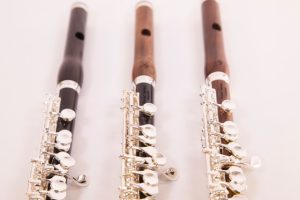
The piccolo has the same fingering system as the flute, despite its smaller size. The oboe’s range is one octave higher than that of the flute due to its larger size.
Piccolo is more of a specialty instrument than a starter instrument for most proficient flutists (which implies playing both instruments at separate times in the same performance). Intonation can be a challenge because of the amount of breathing required.
-
CLARINET
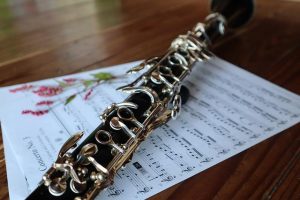
Another common beginner instrument is the clarinet! The clarinet also needs a lot of air, and beginners must pay special attention to their embouchure to seal the mouthpiece while allowing the reed to vibrate.
A good clarinet should be well-balanced so that you can play it with good posture and the correct bell angle without feeling any strain or discomfort while holding it. The bells, thumb rests, and neck straps on this instrument can be adjusted to accommodate a wide range of students’ heights and weights.
-
SAXOPHONE
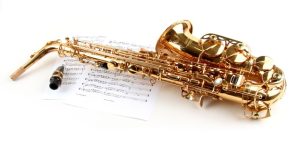
The saxophone is one of the woodwind instruments that are considered “beginner” instruments. When it comes to the four common saxophones in use today, the alto saxophone is the one that younger students typically begin with.
There are many similarities between the embouchure of the saxophone and that of the clarinet because both instruments have mouthpieces and reeds that are similar in size. Alto saxophone reeds need to be replaced and cared for just like the clarinet’s reeds.
-
BASSON
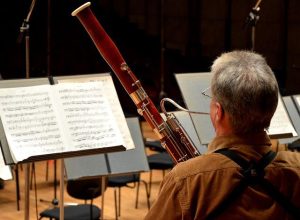
Unlike the oboe, the bassoon plays with two sets of reeds. The double reed embouchure is also considered to be an advanced instrument because of the difficulty of producing it.
In contrast to the oboe, which is a small and light instrument, the bassoon’s weight and size necessitate its usage of a seat strap. It’s best to test out a bassoon before you buy it because some have a wider hand span than others.
A tiny bassoon or tenoroon may be more appropriate for young students. They’re easier to tote around, and they let youngsters begin playing at a younger age.
-
OBOE

The oboe’s double reed is created from two pieces of shaped cane that are joined together with string, making it a little more complex instrument.
Double reed playing involves a somewhat different embouchure, or mouth posture, which can be difficult for beginners.
They also learn to construct and tune their reeds, a technique that requires considerable skill and patience as they advance. The cost of reeds and the resources needed to make them should be taken into account while selecting whether or not to learn to play the oboe.
If you’re interested in learning to play the oboe, start with a high-quality instrument like the Rosedale Professional Oboe with an Ebony Body. Even though cheaper instruments exist, they don’t sound very good!
There are some wonderful solos to be found on the oboe, so if you are a hard-working student, this instrument may be right for you!







